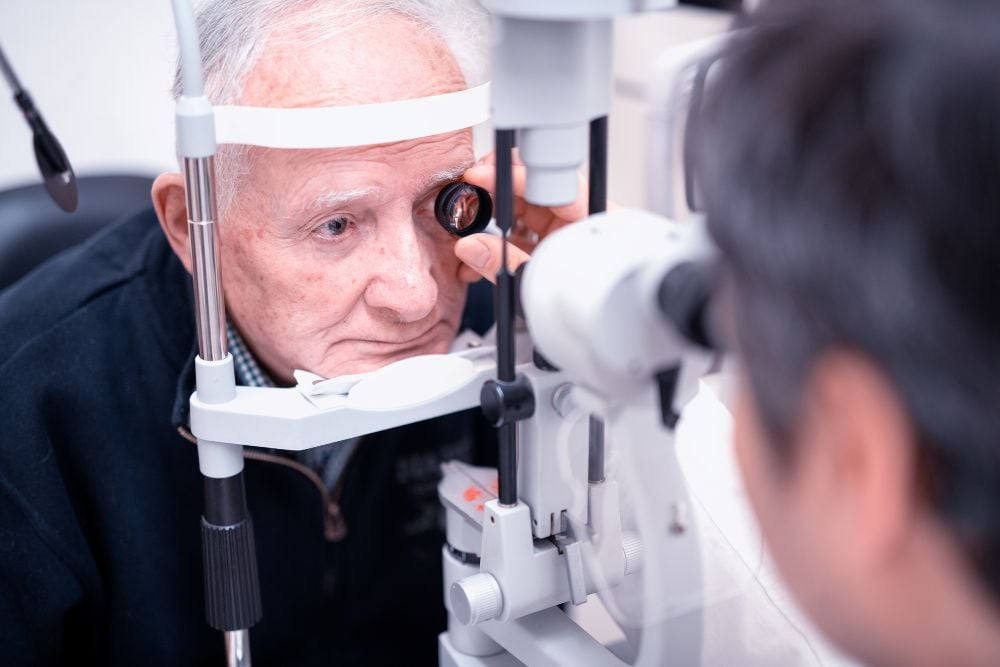Retinal Artery Occlusion: The Eye’s Version of a Stroke

High blood pressure and heart disease can affect many parts of the body, but did you know they can also threaten your vision? A retinal artery occlusion (RAO) occurs when a blood clot or cholesterol buildup blocks blood flow in one of the retina’s arteries, causing sudden, often painless vision loss. Sometimes referred to as a “stroke of the eye,” an RAO isn’t just an eye emergency – it may also signal a higher risk of stroke elsewhere in the body. Understanding the symptoms and risks of RAO is key to protecting both your eyesight and your overall health.
Understanding Retinal Artery Occlusion
There are two types of RAOs: branch retinal artery occlusion (BRAO) and central retinal artery occlusion (CRAO). BRAO occurs when the small arteries in the retina are blocked, while CRAO happens when the central artery of the retina is obstructed. CRAO is a serious condition that resembles a stroke in the eye and indicates a risk for having a stroke in the brain. Because CRAO is a medical emergency, it's crucial to visit a hospital emergency room immediately for evaluation and treatment.
The most common symptom of RAO is sudden, painless vision loss. This can occur as complete loss of vision in one eye (due to CRAO) or as partial loss of vision in one eye (from BRAO). In some cases, patients may be able to regain some of the lost vision. Other symptoms can include complete vision loss, loss of peripheral vision, distorted vision, and the presence of blind spots in the visual field.
Diagnosing and Treating Retinal Artery Occlusion
An untreated RAO can lead to permanent vision loss, so it's crucial to go to the emergency room immediately if you experience any symptoms of RAO. Treatment options are limited but may include:
- Managing underlying conditions and risk factors: For some patients, the best approach is to address risk factors, such as taking medications to help lower blood pressure.
- Anti-vascular endothelial growth factor (anti-VEGF) medications: Anti-VEGF medications are a group of drugs that inhibit the abnormal growth of blood vessels in the eyes. After administering numbing eye drops, these medications are injected directly into the eye.
- Focal laser therapy or surgery (photocoagulation): This procedure uses a high-energy laser beam to break down damaged blood vessels or seal leaking blood vessels.
Unfortunately, many people experience permanent vision loss, especially with CRAO. While some individuals do regain some vision after an RAO, they may not see as well as they did previously. It's essential to continue seeing a retina specialist, as there may be further eye complications related to RAO in the future. Your retina specialist will monitor and treat any issues to help prevent additional vision loss.
Schedule an Appointment with a Retina Specialist
Retinal artery occlusions, which include both branch retinal artery occlusions and central retinal artery occlusions, are serious medical conditions that can result in permanent vision loss. If you experience any symptoms of RAO, it's crucial to go to the emergency room immediately. To reduce your risk of an eye stroke, you should have regular dilated eye exams with a retina specialist. The earlier an RAO is diagnosed and treated, the better the potential outcomes for your vision. Because RAO can also be a warning sign of future stroke risk, timely diagnosis and follow-up are important for both your vision and overall health.
At Vitreoretinal Consultants, we’re proud to be one of the largest retina practices serving patients in Elmhurst, NY, Flushing, NY, Great Neck, NY, Hauppauge, NY, Manhattan (Upper East Side), NY, Scarsdale, NY, Riverhead, NY, Rockville Centre, NY, Shirley, NY, New City, NY, and Westbury, NY. Contact us today for more information or to schedule an appointment.


